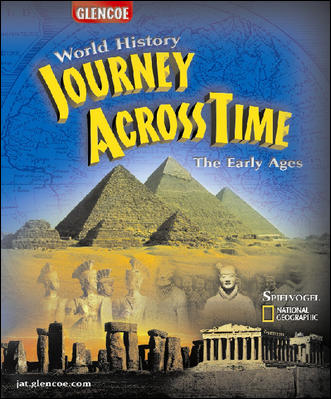
Journey Across Time: The Early AgesChapter 2: Ancient EgyptChapter OverviewsEgyptian civilization began in the fertile Nile River valley. The Egyptians depended on the Nile and its dependable floods for survival. They also relied on the river for trade and transportation. The geographic features of the region—cataracts, deltas, and deserts—protected the Egyptians from invasions. The advancements of the civilization created a need for government. Around 3100 B.C., Narmer united Upper and Lower Egypt into one kingdom. After his death, Narmer's family created Egypt's first dynasty. Over a period of about 2,800 years, Egypt would be ruled by 31 dynasties. These years are divided into three periods—the Old, Middle, and New Kingdoms. Egypt experienced growth and prosperity during the Old Kingdom. Egyptian kings, called pharaohs, were believed to be the sons of Re, Egypt's sun god. Pyramids served as elaborate tombs to store the mummy of the pharaoh. The Middle Kingdom was marked with peace, prosperity, and accomplishments in art, literature, and architecture. During the New Kingdom, Egypt gained new territory and reached the height of its power. The rulers of this period are some of Egypt's most famous pharaohs. They included Hatshepsut, Thutmose III, Akhenaton, Tutankhamen, and Ramses II. South of Egypt, the Nubians settled in farming villages and grazed their herds of cattle on the savannas. Eventually, the more powerful Nubian villages formed the kingdom of Kerma. A power struggle between the Nubians and the Egyptians began in the 1400s B.C., when Egypt invaded Kerma, causing the kingdom to collapse. The cultures of Egypt and Nubia blended. When Egypt began to decline, the Nubians broke away and formed the kingdom of Kush. The people of Kush devoted their time to ironworking and grew very wealthy from trade. Kush's trading power lasted 600 years. Sometime in the A.D. 200s, the kingdom began to weaken, and the kingdom of Axum arose in what is today Ethiopia. |  |















